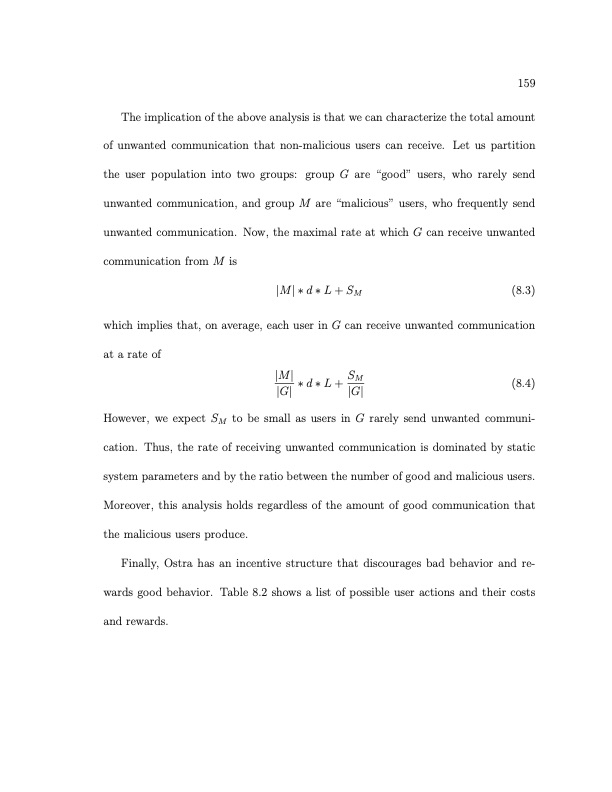
PDF Publication Title:
Text from PDF Page: 183
159 The implication of the above analysis is that we can characterize the total amount of unwanted communication that non-malicious users can receive. Let us partition the user population into two groups: group G are “good” users, who rarely send unwanted communication, and group M are “malicious” users, who frequently send unwanted communication. Now, the maximal rate at which G can receive unwanted communication from M is |M|∗d∗L+SM (8.3) which implies that, on average, each user in G can receive unwanted communication at a rate of |M| ∗ d ∗ L + SM (8.4) |G| |G| However, we expect SM to be small as users in G rarely send unwanted communi- cation. Thus, the rate of receiving unwanted communication is dominated by static system parameters and by the ratio between the number of good and malicious users. Moreover, this analysis holds regardless of the amount of good communication that the malicious users produce. Finally, Ostra has an incentive structure that discourages bad behavior and re- wards good behavior. Table 8.2 shows a list of possible user actions and their costs and rewards.PDF Image | Online Social Networks: Measurement, Analysis, and Applications to Distributed Information Systems

PDF Search Title:
Online Social Networks: Measurement, Analysis, and Applications to Distributed Information SystemsOriginal File Name Searched:
SocialNetworks-Thesis.pdfDIY PDF Search: Google It | Yahoo | Bing
Cruise Ship Reviews | Luxury Resort | Jet | Yacht | and Travel Tech More Info
Cruising Review Topics and Articles More Info
Software based on Filemaker for the travel industry More Info
The Burgenstock Resort: Reviews on CruisingReview website... More Info
Resort Reviews: World Class resorts... More Info
The Riffelalp Resort: Reviews on CruisingReview website... More Info
| CONTACT TEL: 608-238-6001 Email: greg@cruisingreview.com | RSS | AMP |